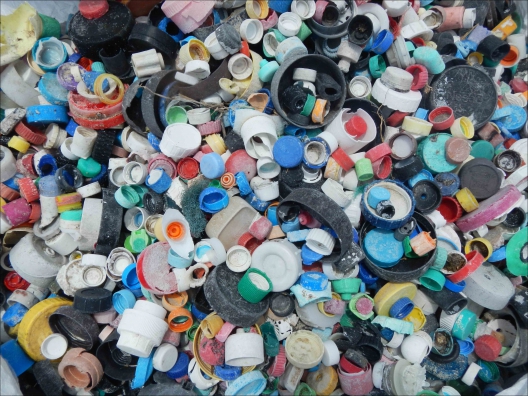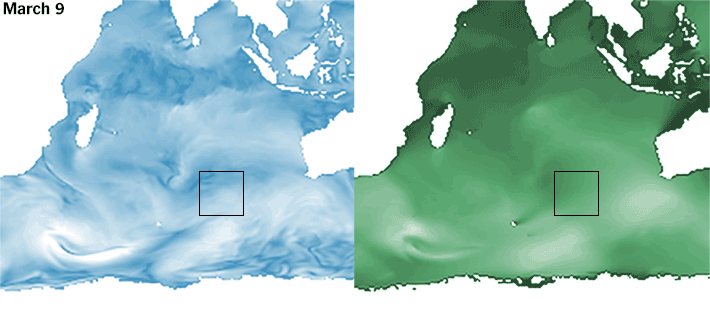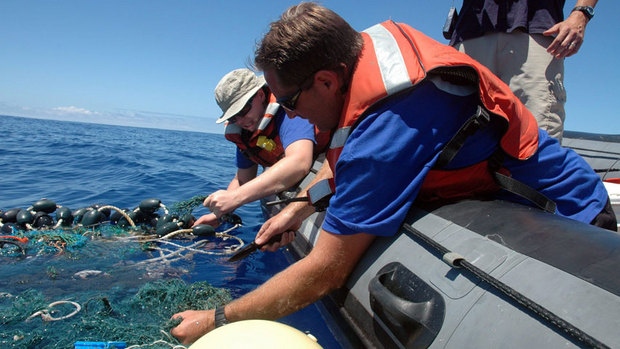Are Satellites Looking For MH370 Just Picking Up Garbage?
Satellites keep picking up images of objects in the water, but nothing has been discovered so far.
According to the satellite data, MH370 went down somewhere in the Indian Ocean on 8 March 2014. So that’s where the SAR Operations are ongoing.
On Friday, though, further analysis of the data used to plot the doomed plane’s final course revealed that it was flying faster than expected, meaning that it probably crashed in a different area of the Indian Ocean off Australia. So search crews have shifted their focus.
Australian air force crews have been searching the Indian Ocean for debris from Malaysia Airlines Flight 370
Image via imgur.comThe Indian Ocean, as we know, is a big ocean. But it is also much polluted.
What’s also becoming shockingly apparent is that it’s also very polluted ocean. Satellites keep picking up images of stuff in the water, but at least so far, none of that stuff has been found, much less identified as debris from the missing plane.
It turns out MH370 went down in an area called the 'Indian Ocean Gyre'
"The Indian Ocean Gyre is “a region where there is little movement of the ocean’s currents, which leads to the accumulation of floating garbage", notes Marc Lallanilla at the website livescience.com in an article headlined “Finding Flight 370: A Needle in a Garbage Patch?
And according to an article publish on the New York Times this week, "conditions in the Indian Ocean, where officials believe MH370 may have ended, are some of the harshest in the world"
“ ‘Any search and rescue attempt will be hampered by untold quantities of debris,’ said Charles Moore, a sailor who studies marine debris at the Algalita Marine Research Institute in Long Beach, Calif. Even with relatively high-resolution satellite imaging, he said, ‘you are going to be confounded by the detritus of civilization.’ ”
Conditions in the Indian Ocean — where officials believe Flight 370 may have ended — are some of the harshest in the world
Image via nytimes.com“The detritus of civilization.” Sounds better than “garbage,” doesn’t it? But it isn’t.
Not only that, but that garbage doesn't just pose a danger to marine life, or act as a nuisance to those searching for MH370
As Marc Lallanilla, at the website livescience.com, writes: “Recent research has found that about 1,000 different microbes thrive on garbage patches. Many of the bacteria belong to the genus Vibrio (the same genus as the cholera bacteria), which is known to cause diseases in humans and animals.”
Scientists with the Scripps Institution of Oceanograpy pull in a patch of sea garbage in 2009. The institution says the Great Pacific Garbage Patch, about 1000 km off the coast of California, is affecting the habitat of at least one marine insect.
Image via cbc.caWhile the tragedy of MH370 was not to be dismissed, the incident also shows mankind's callous disregard for the ocean and environment
The human tragedy of Flight 370 is not to be dismissed. For the families who have lost loved ones, it is a life-changing event, a pain that will never go away.
But on a global scale, what the search for the missing plane has revealed is another human tragedy: the callous disregard we show for our oceans and our environment.
We will find Flight 370. Hopefully, we will also find out why it crashed. But we don’t need to look nearly so hard to find out why the world’s oceans are so polluted. We just need to look in the mirror.




